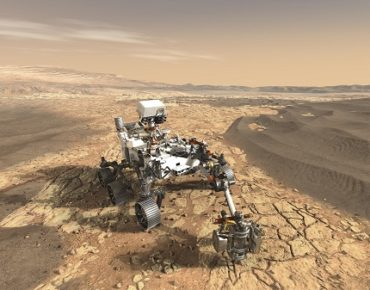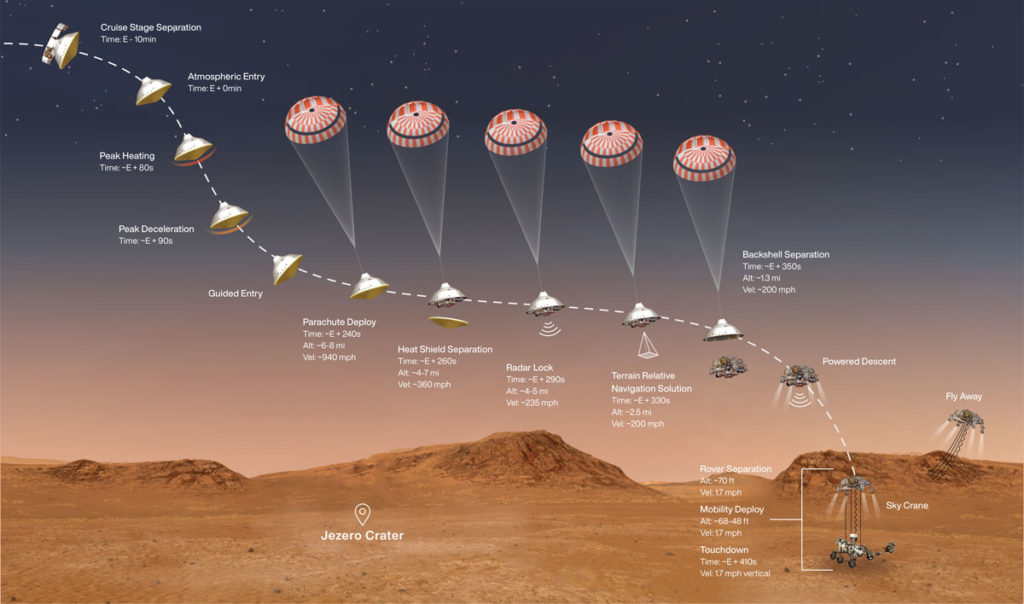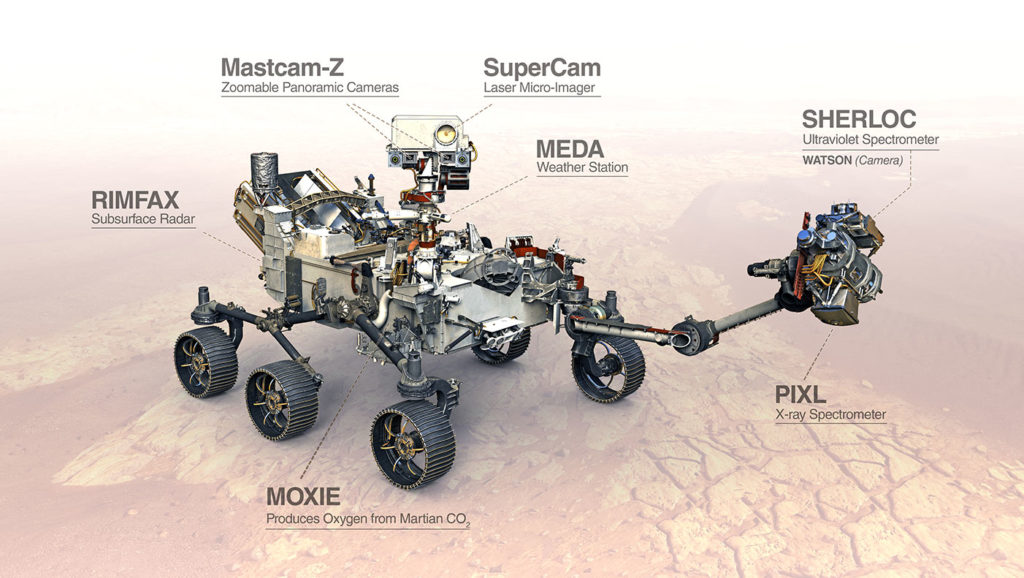NASA’s Latest Mars Rover, Perseverance, Will Get Help from AI on the Red Planet

As NASA’s latest Mars rover, Perseverance, prepares to land on the Martian surface Feb. 18 (Thursday) after a seven-month flight to the red planet, the use of AI will quickly become an important part of the rover’s mission once it begins to traverse the landscape.
As Perseverance jumps into its goal of searching for traces of microscopic life on Mars that dates back billions of years, the rover will use an AI-powered device called the Planetary Instrument for X-ray Lithochemistry, or PIXL, to search for clues, according to NASA. PIXL is a lunchbox-size instrument carried at the end of Perseverance's 7-foot-long robotic arm. Using a coring drill on the end of the arm, the rover will collect core samples from the planet that will be left on the Mars surface for collection by a future mission.
AI will also be used aboard Perseverance for navigation on the planet’s surface over the life of its mission, as well as for the landing and a variety of other scientific tasks. The mission is scheduled to last for at least one Martian year, which is about 687 Earth days.
But before the rover can ever use any of those AI capabilities, it will have to endure its actual landing on the surface, which is being called the riskiest approach ever by any spacecraft heading to Mars.
Perseverance is scheduled to land on the red planet’s surface about 3:55 pm EST on Feb. 18 after what is billed as a harrowing approach that mission engineers have dubbed as “seven minutes of terror,” according to NASA. That’s how long it takes for scientists and engineers at NASA and the Jet Propulsion Laboratory (JPL) to learn how the landing went due to delays in getting mission telemetry data across the 293 million miles between the Earth and Mars.
The terrain selected for the landing site is near the 28-mile-wide Jezero Crater, which features an ancient river delta, steep cliffs, sand dunes, boulder fields and smaller impact craters, according to NASA.
To land, the spacecraft delivering the rover must begin an intense entry, descent, and landing (EDL) phase as it reaches the top of the Martian atmosphere where it will be traveling at about 12,100 mph on entry. That EDL phase includes the shift from arriving from Earth to landing on Mars using a complex series of events to slow the craft with a specialized supersonic parachute, and then slow its final approach to the planet using four thruster rockets and a special lander vision system. If all goes well, Perseverance will have gone through its seven minutes of terror and finally landed safely on the surface.

Here is an illustration of the harrowing entry, descent and landing phase of the Perseverance mission to Mars. Image credit NASA/JPL
The Perseverance rover is larger than an SUV – 10 feet long, 9 feet wide, 7 feet tall and weighs about 2,260 pounds and is based largely on the heritage and design of the Mars Curiosity rover that came before it, according to NASA. The rover will also be used to test new technologies for future robotic and human missions to Mars, including a Terrain Relative Navigation autopilot for avoiding hazards, and a set of sensors for gathering data during the landing. A new autonomous navigation system will allow the rover to drive faster in challenging terrain, compared to earlier rovers which traveled more slowly across the surface.
Powering Perseverance is a Multi-Mission Radioisotope Thermoelectric Generator (MMRTG) from the U.S. Department of Energy that uses heat from the natural decay of plutonium-238 to generate electricity.
The rover was launched July 30, 2020, from the Cape Canaveral Air Force Station in Florida atop a ULA Atlas 541 rocket.
Also happening in space this week is a scheduled Feb. 20 delivery of powerful AI, edge and cloud computing tools from HPE and Microsoft Azure to the International Space Station as part of ongoing technology experiments aimed at preparing NASA for launching future crewed exploratory missions to Mars.
The new equipment and software, including HPE’s specialized, second-generation Spaceborne Computer-2 (SBC-2), will mark the first time that broad AI and edge computing capabilities will be available to researchers on the space station.
The new hardware, software and services are scheduled for launch to the ISS at 12:36 p.m. on Feb. 20 aboard Northrop Grumman’s 15th (NG-15) Commercial Resupply Services cargo mission. The NG-15 mission’s launch from the Wallops Flight Facility at Wallops Island, Virginia, is contracted by NASA to bring needed supplies.
The new SBC-2 computer that’s heading to the space station follows the original Spaceborne Computer-1 that was sent to the ISS in 2017 as part of a validation study to test it in the rigors of space aboard the orbiting laboratory. SBC-1 returned to earth in 2019 after completing its mission. Both Spaceborne Computer-1 and Spaceborne Computer-2 are sponsored by the ISS National Lab.
The Perseverance mission is part of a larger NASA program that also renews missions to the Moon as a way to prepare for human exploration of Mars in the future, according to NASA. Charged with returning astronauts to the Moon by 2024, NASA is working to establish a sustained human presence on and around the Moon by 2028 through NASA's Artemis lunar exploration plans.
JPL, which is managed for NASA by Caltech in Pasadena, California, built and manages operations of the Perseverance and the earlier Curiosity rovers.
Check back tomorrow for the second part of our EnterpriseAI report on the Perseverance mission to Mars, with more details about how AI is playing a larger role in this latest mission.

Here are some of the scientific instruments and packages included onboard the Perseverance Mars rover. Image credit: NASA/JPL










